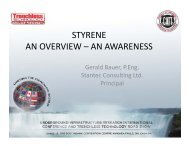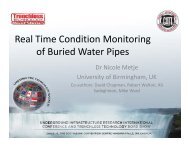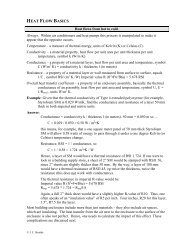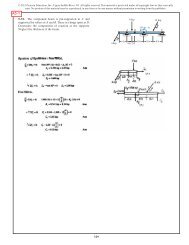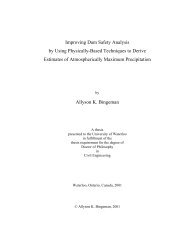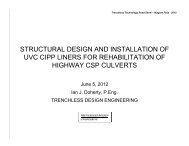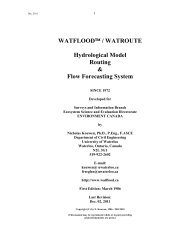Planning Horizontal Directional Drilling for Pipeline Construction
Planning Horizontal Directional Drilling for Pipeline Construction
Planning Horizontal Directional Drilling for Pipeline Construction
You also want an ePaper? Increase the reach of your titles
YUMPU automatically turns print PDFs into web optimized ePapers that Google loves.
• amount of working space;<br />
• regulatory requirements and conditions including timing constraints;<br />
• equipment availability;<br />
• contractor expertise;<br />
• downstream water users;<br />
• landowner and community issues;<br />
• engineering constraints; and<br />
• construction season.<br />
(CPWCC 1999)<br />
The selection of a crossing method is an exercise in striking a balance among the<br />
considerations listed above to derive the most practical solution. The method that<br />
is preferred is usually that which is geotechnically feasible and offers the required<br />
level of environmental protection <strong>for</strong> the lowest cost. Selection of an HDD<br />
crossing when other methods are more cost effective, technically feasible and<br />
offer sufficient environmental protection may be inappropriate. If an HDD is the<br />
strongly preferred method by regulators and this method is considered to have a<br />
low likelihood of success or is otherwise impractical, the regulators should be<br />
provided detailed in<strong>for</strong>mation on the crossing method selection process and the<br />
rationale <strong>for</strong> the rejection of the HDD method. Additional in<strong>for</strong>mation on the<br />
crossing method selection process is available in CPWCC (1999).<br />
3.4 Other Selection Issues<br />
Assuming that HDD has been selected as the preferred crossing method, the<br />
following other selection issues must be evaluated.<br />
3.4.1 Access<br />
<strong>Pipeline</strong> routing and drilling execution planning should consider that access to<br />
both sides of the drill will be required during the HDD construction process.<br />
If adequate access to the crossing cannot be provided on both sides of the<br />
watercourse and the watercourse is suitable <strong>for</strong> the installation of a crossing<br />
structure, a temporary crossing structure may need to be installed <strong>for</strong> vehicle and<br />
equipment traffic. As with the selection of the crossing method, selection of the<br />
vehicle crossing technique also involves striking a balance between many of the<br />
same considerations listed above <strong>for</strong> crossing method selection to derive the most<br />
practical solution. The technique that is preferred is usually one which offers the<br />
required level of environmental protection <strong>for</strong> the lowest cost.<br />
Access will also be required:<br />
• to a water source during the installation of the HDD (see Section 3.4.4);<br />
• <strong>for</strong> monitoring of the drill path; and<br />
• during clean-up operations in the event of a drilling fluid release to surface.<br />
September 2004 <strong>Planning</strong> <strong>Horizontal</strong> <strong>Directional</strong> <strong>Drilling</strong> <strong>for</strong> <strong>Pipeline</strong> <strong>Construction</strong> Page 3-2



